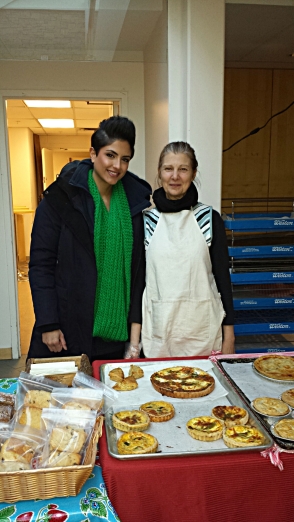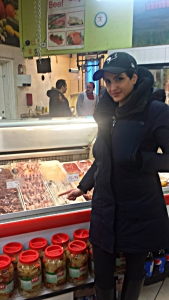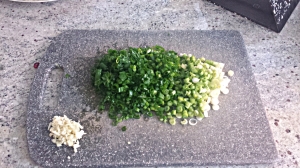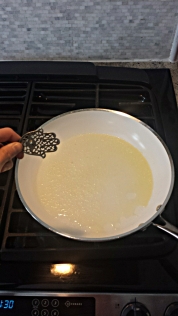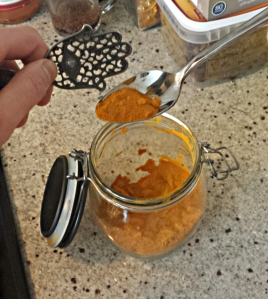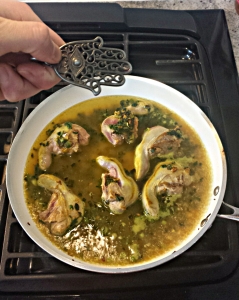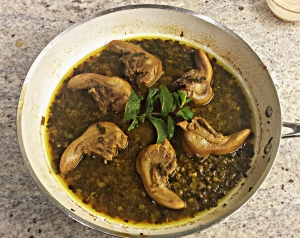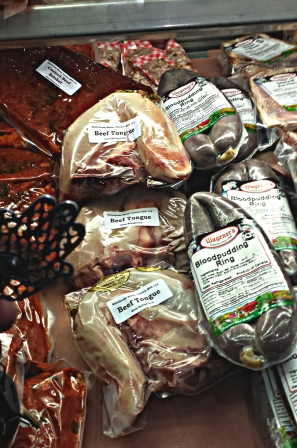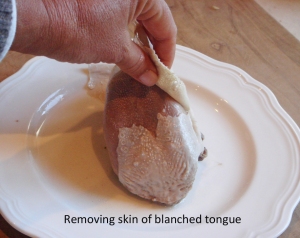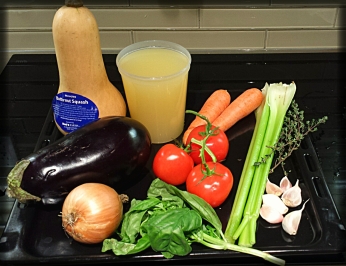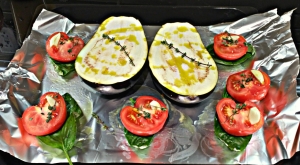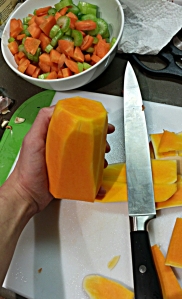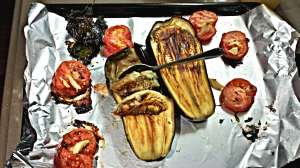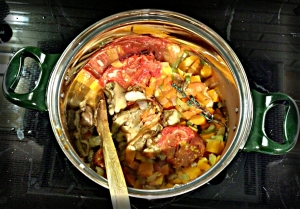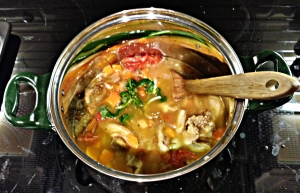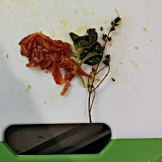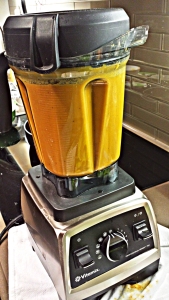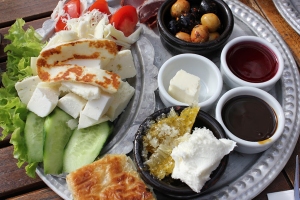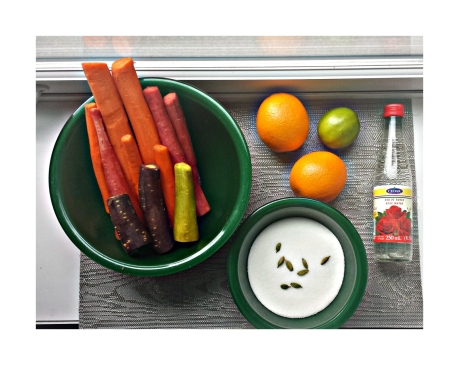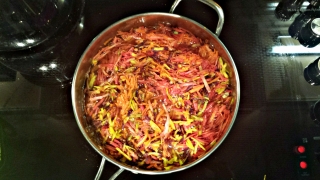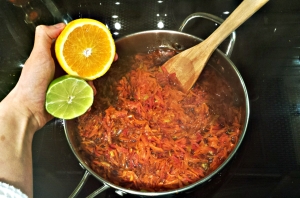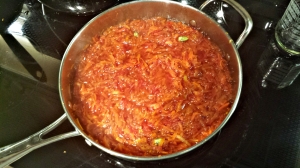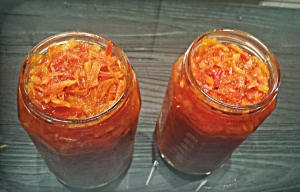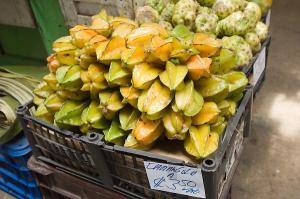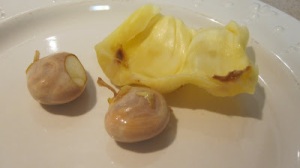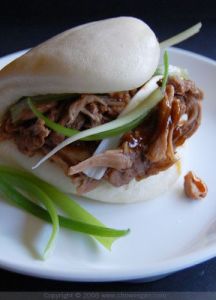I decided to try out the Paleo diet for a week. Going “paleo” has been on trend for the past few years, as more people are becoming aware of the ill-effects of eating too many grains and processed foods. The paleo diet, in a nutshell, is a diet based on the types of foods presumed to have been eaten by early humans, consisting chiefly of meat, fish, vegetables, and fruit, and excluding dairy or grain products and processed food. You can read more about it on Robb Wolf’s comprehensive website. He is the New York Times Best Selling author of The Paleo Solution: The Original Human Diet, and has been a star player in in helping promote and educate people worldwide on the paleo diet.
Here is what you can eat and what you must avoid on the Paleo diet:

After browsing numerous paleo food blogs, I read and quickly realized that the best way to keep myself on track for the week was to be prepared. This meant getting a good grocery haul done on Sunday, planning out roughly what I would eat for the week, and doing some meal prep to have food on hand. As the saying goes, “If you fail to prepare, prepare to fail!”.
At the grocery store, I loaded my cart with:
1- A large variety of fresh fruits and vegetables
2 – Quality meats (grassfed ground beef, a whole organic chicken, pasture raised bacon, two cartons of organic eggs, canned tuna, and some prosciutto)
3 – Various nuts and seeds for snacking (no peanuts – not paleo!)
4 – Paleo-friendly root veggies and starches (sweet potatoes, butternut squash, green plaintains)
5 – Healthy fats (coconut oil and ghee for cooking, extra virgin olive oil for dressings, avocado oil)
I kept a daily log documenting my thoughts on experiences, which you can read about below:
Sunday:
Grocery shopping, meal planning & meal prep day.
Grocery shopping thoughts: The paleo diet is expensive! What cost the most was not the fresh produce, but the meats, the nuts, and the fats. I’m not saying meat is generally inexpensive, but high quality meat (whether it is grass-fed, pastured, or organic) is very, VERY expensive – especially for a student on a budget. Likewise, nuts, especially of the natural/organic variety, is are very expensive. Fats, in particular organic coconut oil and avocado oil, are pricy too! The redeeming fact about the cooking fats is that I wouldn’t have to buy them on a weekly basis – a jar of coconut oil and a bottle of extra virgin olive oil should last me at least a month or two.
Meal planning & prep:
Breakfasts: I decided to bake a large frittata and a sweet potato hash to have as a quick breakfast throughout the week. The frittata included spinach, caramelized onions, bacon, and a carton of eggs.The sweet potato hash was simply cubed sweet potatoes pan-fried in some coconut oil with minced garlic and paprika. I was excited to have it for the week!
Lunch: I decided to make myself a salad for lunch every day. I had plenty of greens on hand (kale and arugula) and a variety of vegetables, fruits, and nuts to top it with. I grilled some veggies (pictured below) to ad to my salads for extra flavour.

I also hard boiled half a carton of eggs to have as a protein with my salad, but had prosciutto and canned tuna as options to top them with as well. Olive oil and vinegar or lemon juice would be my dressing.
Dinners: After all that prep, I was too tired to prep dinner for the week, but planned what I would make on Monday for the rest of the week. 1 – A hearty beef chili (bean-less), and 2) a whole pan roasted chicken with root vegetables.
Snacks: Nuts & fresh fruit
Monday:
I was pretty excited on Monday to eat my prepped frittata and sweet potato hash. Lunch was good too – I felt satisfied and full. My sweet tooth kicked in, and as much as I wanted a cookie, I decided on a piece of fruit for dessert instead.
I prepped my beef chili and pan roasted chicken. Here are the photos of it below:
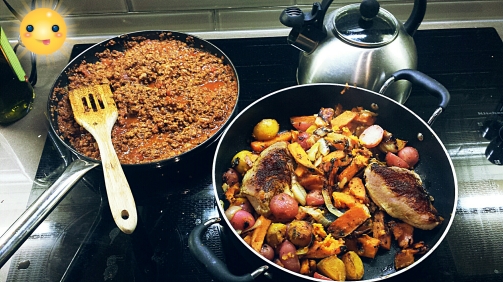
I decided to keep the chili and the chicken for the remaining days of the week, and went out to dinner with my boyfriend. We went to a sushi restaurant as per my request so I could get a paleo friendly food, which was sashimi – no additives, no “bad” oils, no rice, straight protein – this is as paleo as it gets! I skipped on the soy sauce (not paleo) and brought my own coconut aminos (paleo friendly). It felt good knowing I could go out to eat and get something paleo friendly without having to ask for substitutions, but I did still have to bring my own dipping sauce. I realized it would be hard to eat paleo on a whim – I had to plan to bring my own coconut aminos to fully enjoy my meal, because I wouldn’t have enjoyed the sashimi without a soy-like alternative.
My sashimi dinner (at Yuzu No Hana Restaurant):
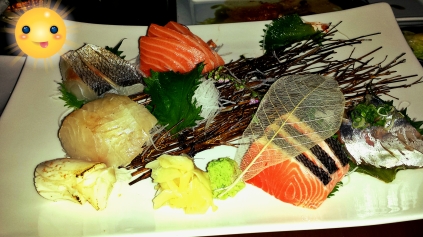
When we got back home, I didn’t feel quite full – maybe from the lack of rice with the sashimi. I had half of an avocado as a night-time snack, which helped fill me up.

Tuesday:
Tuesday went smoothly for the most part. I found myself craving oatmeal for breakfast in the morning, but felt satisfied after eating my frittata and hash. I changed up my salad for some variety – instead of hard boiled eggs for protein, I topped it with prosciutto. It was delicious! Here is my lunch salad:
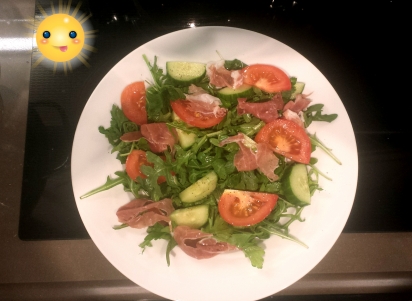
I also snacked on a massive pomelo, but only managed to eat half. It was huge!

Dinner was chili. It was still just as comforting and filling without the beans, and without bread as a dipper. I think I might always do bean-less chilies from now on, and I really didn’t crave or want bread on the side.
Wednesday:
The day went smoothly, I had my frittata & hash for breakfast, and a massaged kale salad with tuna for lunch. Here’s my salad:
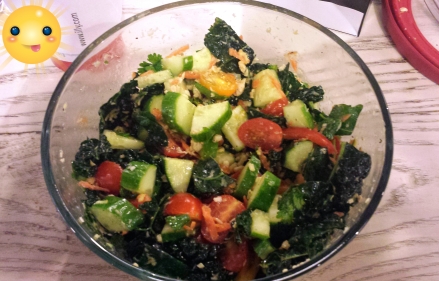
Things got rough once it was dinner time. It was my day off from school, so my parents invited me over for dinner. I felt bad that I had made an entire organic chicken that was still untouched in the fridge, but realized family time was more important than my meal, and I would figure it out. My mom had prepared an Iranian stew for dinner which is served with rice. I opted out of eating the rice, and just ate the stew, which included lamb, eggplant, tomatoes, onions, and herbs, with a salad on the side. Although the stew was absolutely delicious on its own, I never realized how much more enjoyable rice makes the meal. In my Iranian household, I’ve grown up my whole life eating rice as my primary carb source. I felt like I was missing out.
Thursday:
I woke up cranky and craving carbs, probably in part to avoiding processed carbs, and partly with having to avoid rice with my family meal yesterday. Psychologically, although it wasn’t the main reason, I was still upset that I had to skip on something that was literally so close to home for me. I felt silly that I was letting something as trivial as not eating rice upset me, but at the same time, I felt being upset was justified – food and traditions are very important and become ingrained as part of your values. I felt low in energy.
I talked myself out of a sugar-binge and settled on eating my frittata. To curve my carb-craving, I made myself a faux “peanut-butter and jelly” with a banana smothered in almond butter and sugar-free strawberry preserves:

It surprisingly kicked my craving and I felt less cranky afterwards.
Dinner was the pan roasted chicken. I deseeded three pomegranates that my mom gave me to take home, and polished a third of the mix after dinner as a sweet and light dessert, which further helped curb my carb craving.

By the end of the day, I felt fully satisfied.
Friday:
On Friday, I was more than ready to get back to oatmeal for breakfast. I had to force myself to eat the frittata (thankfully the last of it), and sweet potato hash. I jazzed up my lunch salad to make myself feel better and added some bacon – bacon makes everything better!
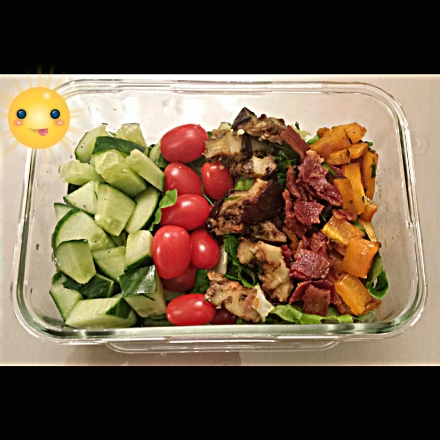
I also made myself a nice paleo-friendly dessert to make myself feel better by sautéing some apples in ghee, a touch of maple syrup, and cinnamon. It almost felt like pie, and I was surprised that I didn’t miss the crust that much. Dinner was the chicken once again. Not as good the second time around, but still tasty.
Saturday:
I had more time to make a different breakfast on Saturday, so I treated my boyfriend and myself to some paleo-friendly pancakes and sausages, which I asked him to bring. I was SO excited for this meal! I cooked up the sausages, and made pancakes with sweet potatoes, coconut flour, eggs, and maple syrup as the base. We topped our pancakes with almond butter.
This was my most satisfying meal yet – it felt like I was “cheating”, even though all the ingredients were healthy and paleo-friendly.
My epic paleo pancake and sausage breakfast:

The pancakes turned out so good, I decided I would share the recipe with you.
Paleo Sweet Potato Pancakes
Serves 2-3 people
Ingredients:
– 300g sweet potato, fully cooked and cooled (about 1.5 cups)
– 4 whole eggs
– 4 tablespoons of organic coconut flour
– 1-2 tablespoons of maple syrup (to taste)
– 1 tsp gluten free baking powder
– 1 tsp cinnamon
– pinch of salt
Instructions:
1. Wrap sweet potatoes in a moist towel and microwave for 8-9 minutes, until tender. Let sweet potatoes cool until they can be handled.
2. Take skin off sweet potatoes and put into blender with remaining ingredients. Blend until smooth.
3. Heat a large pan to medium heat (or use a griddle if you have one) to cook pancakes. Pour 1/4 cup of the batter for each pancake, and cook 2-3 minutes on each side, until cooked through.
4. Top pancakes with almond butter and banana slices (or nut butter and fruit of choice), and serve with additional maple syrup, if desired.
Lunch was back to salad. I love salad, so I wasn’t tired of eating this meal.
Dinner was the last of my chili. The flavour was still on point. Like stews, I found the flavour is still fantastic and even improves after several days.
Sunday:
On Sunday, I woke up motivated to stick to my last day on the paleo diet. I made some fried eggs for breakfast which I ate with fruit and some avocado slices, it felt good to change things up. I also felt full of energy.
I got my grocery shopping out of the way, and opted out of buying oatmeal. I realized I didn’t need it in the morning. I stuck to the “paleo” ingredients, but unfortunately, couldn’t afford to buy high quality meats. It was wasn’t in my budget. I also bought fruits and vegetables that were on special, and only bought organic items that were either reduced or affordable.
Lunch and dinner were the usual suspects – salad, and the last of my chicken and chili. I wasn’t excited to eat the chicken and chili again, but told myself that this week was a new week, and I could try out new, delicious recipes!
Recap of the week on the Paleo diet:
Going bread-free was the easiest part of the process. I actually didn’t crave it at all. What I missed the most was was oatmeal in the mornings, but realized at the end of the week that all the carbs were causing me to have energy crashes by lunch time. I found that by eating a protein, fat, and fiber rich breakfast, I had more energy to last me through to lunch without getting hunger pangs. I think that’s why eating a salad was so easy for me – I wasn’t starving, so fresh and hearty salad did the trick to fill me up until dinner.
Fruit was helpful for kicking sugar cravings, and it felt good to be eating something that was both tasty and good for you. Although I craved processed carbs like cookies and other sweets, I noticed how much better I felt – both physically and psychologically – by eating a healthier alternative.
I think for the most part, I could stick to the paleo diet long term. I was a healthy eater to begin with, and avoid eating processed carbs for the most part. I think the reason why avoiding them was difficult for me is because a) I knew it was off limits, which made them more appealing and 2) I avoided my typical carb-rich breakfast, which made me crave that carb fix at various points throughout the day. Overall, I realized that I had a lot more energy, which is a great reason to stick to the diet. I don’t think there is anything wrong with eating processed carbs once ina while as a treat. I like to treat sweets and desserts as a treat anyway. Now that I realize how much better I feel avoiding them completely, I will have those treats a lot less, and try substituting them for healthier althernatives. WHat’s more is that there are sitll a lot of paleo foods that can replace the more processed, “unhealthy” foods like breakfast waffles, pies, pancakes. A great example were the paleo pancakes I made – I loved them! They felt like a cheat, and they were still healthy. With some proper planning, I can feel like I’m not missing out on anything. I look forward to those pancakes again this weekend!
The downside to the paleo diet is that it is expensive. Trying to buy all-natural, organic, grass-fed, etc. can get really expensive. It also made me realize how much cheaper groceries are when you include things like processed carbs, beans, and so on, because they are cheap fillers that can stretch out meals and fill you up. Nevertheless, it is still possible to follow the paleo diet – I just have to look for specials and shop smart. This can be difficult, and may require going to several different stores, so it isn’t easy, but it is possible. Organic, pasture-raised, and grass-fed meats will have to be more of a treat, or something I can invest in in the future when my budget allows.
As a chef, I believe it is possible to be paleo. Eating whole foods isn’t difficult, and processed carbohydrates are fairly easy to avoid. If you are adamantly against eating gluten and processed carbs, there are more than enough people who are happy to still eat them and can check things like pasta, rice, etc. for seasoning and flavour. I don’t think it’s necessary to avoid these things completely, so I wouldn’t avoid eating them at all together if I was required to prepare them, but I obviously wouldn’t include these items in my own meals.
I look foward to continuing to eat paleo and continuing to see the positive effects it has on my health, energy levels, and well being.






















